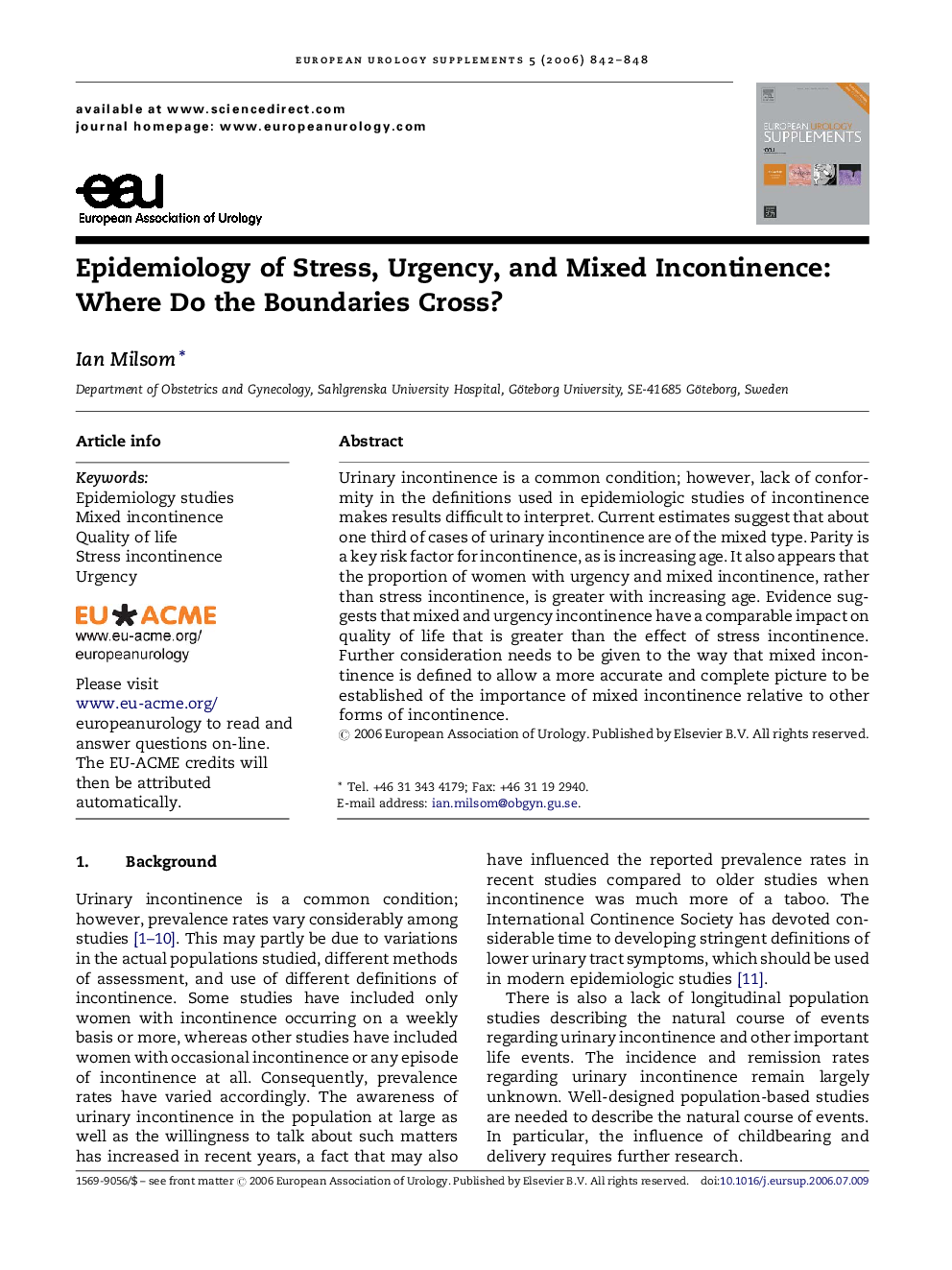| Article ID | Journal | Published Year | Pages | File Type |
|---|---|---|---|---|
| 3927507 | European Urology Supplements | 2006 | 7 Pages |
Urinary incontinence is a common condition; however, lack of conformity in the definitions used in epidemiologic studies of incontinence makes results difficult to interpret. Current estimates suggest that about one third of cases of urinary incontinence are of the mixed type. Parity is a key risk factor for incontinence, as is increasing age. It also appears that the proportion of women with urgency and mixed incontinence, rather than stress incontinence, is greater with increasing age. Evidence suggests that mixed and urgency incontinence have a comparable impact on quality of life that is greater than the effect of stress incontinence. Further consideration needs to be given to the way that mixed incontinence is defined to allow a more accurate and complete picture to be established of the importance of mixed incontinence relative to other forms of incontinence.
